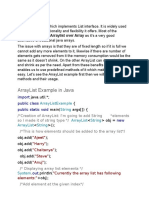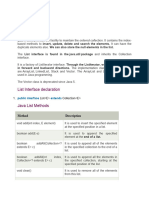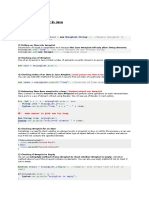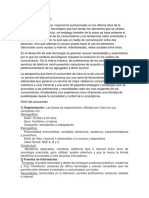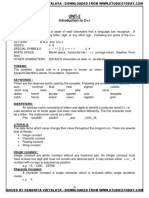0% found this document useful (0 votes)
80 views5 pagesThe ArrayList Short Lecture
ArrayList is a dynamic array implementation of the List interface that allows elements to be added and removed dynamically. It provides utility methods to add, access, remove and iterate through elements. Some key methods are add() to append elements, get() to access elements by index, remove() to delete elements, size() to get count and clear() to remove all elements. ArrayLists are more flexible than arrays but can be slower and use more memory.
Uploaded by
Rohit JoshiCopyright
© © All Rights Reserved
We take content rights seriously. If you suspect this is your content, claim it here.
Available Formats
Download as DOCX, PDF, TXT or read online on Scribd
0% found this document useful (0 votes)
80 views5 pagesThe ArrayList Short Lecture
ArrayList is a dynamic array implementation of the List interface that allows elements to be added and removed dynamically. It provides utility methods to add, access, remove and iterate through elements. Some key methods are add() to append elements, get() to access elements by index, remove() to delete elements, size() to get count and clear() to remove all elements. ArrayLists are more flexible than arrays but can be slower and use more memory.
Uploaded by
Rohit JoshiCopyright
© © All Rights Reserved
We take content rights seriously. If you suspect this is your content, claim it here.
Available Formats
Download as DOCX, PDF, TXT or read online on Scribd
/ 5





